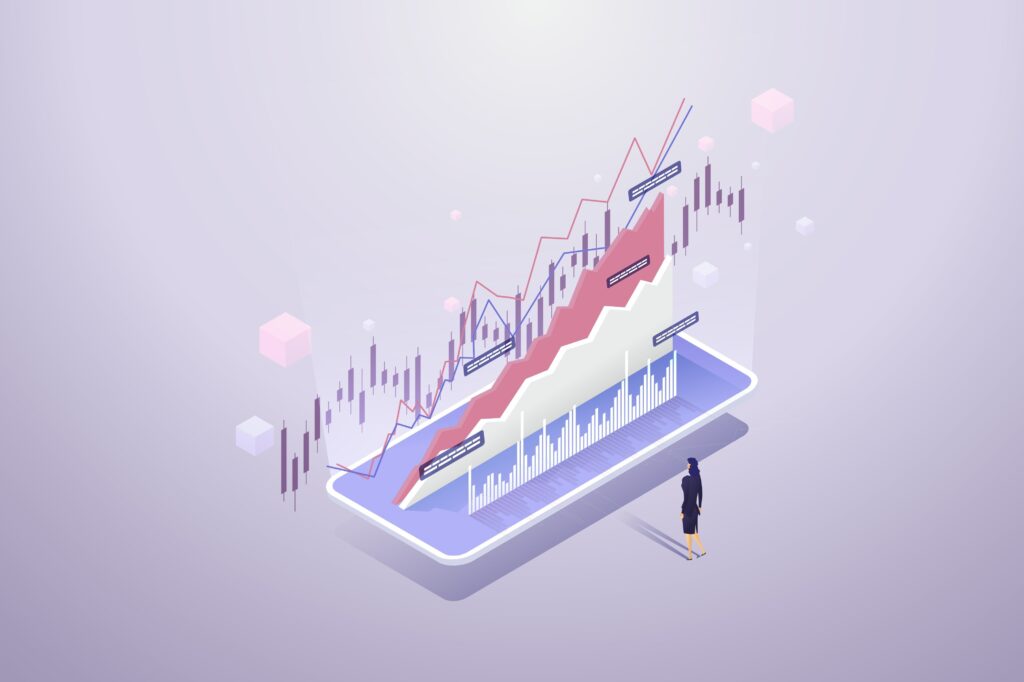Key performance indicators (KPIs) have traditionally told a reliable story about advertising and marketing campaign performance. Because they are so universally relied upon in almost every industry, KPIs have become short-hand in conversations with other business leaders. After all, when someone mentions their cost per acquired customer (CAC), those around them know exactly what they’re talking about.

But what if the standard approach to KPIs is wrong?
That’s what a recent article from MIT Sloan Management Report sought to prove when it took common business metrics to task. It suggested there’s room for much smarter KPIs, those fueled by data analytics and artificial intelligence. Where a lost sale metric may tell the story of a couch that never sold, it fails to share the entire customer experience of choosing an alternative product the same day, possibly even at a higher price point.
The report shows that 60 percent of global managers now feel their KPIs are lacking, but just 34 percent have invested in making their KPIs smarter through AI. However, of those who entrusted AI to improve their KPIs, 90% feel it made a difference. Areas of improvement include efficiency, financial performance, timeliness, and measurement accuracy.
In the age of AI, KPIs should be getting smarter, telling more of the story, and informing future business decisions, and giving marketers a path to success through predictive intelligence. In this blog, we break down common advertising KPIs and how their “smarter” versions can help you create more agile and effective campaigns.
- Lifetime value (LTV)
25% of marketers list a customer’s lifetime value (LTV) as one of the top metrics to measure. It tells a lot about customer loyalty and willingness to return for business. Getting a new customer to commit to your brand can take a lot of work (and advertising), so how can you get them to spend more over time? Higher historical LTV signals a propensity to buy, but it’s not usually enough to predict LTV alone.
Predictive analytics fills that gap by predicting which customers are most likely to spend more over their lifetime. It can also suggest the right actions to take when advertising to them, including which channels or promotions are most likely to get them to spend. Advertisers can predict how their customers may respond to different scenarios, helping create and fine-tune highly personalized campaigns.
Mobile game maker PlaySimple used Pecan’s low-code predictive analytics platform to project users’ LTV after just their second day using the app. They use these new insights to target high-value players for the best customer experience and revenue possible.
- Cross-sell
When you sell more than just your initial product or service, you’re cross-selling, and many KPIs signal cross-sell success, including:
- Cross-sell conversion rate, or the percentage of customers who were cross-sold.
- Customer lifetime value (LTV), with a higher LTV signaling repeat purchase or cross-selling success.
- Average order value (AOV), which, as it increases, may signal you’re doing well with cross-promotional offers.
Each of these KPIs doesn’t necessarily tell you how to improve cross-selling, but we know that customer satisfaction plays a role. When companies increase customer satisfaction by 20% or more, they often see cross-sell rates increase by 15-20%.
Predictive analytics has unique value in helping you achieve higher cross-sell rates. It can offer personalized product recommendations for individual customers, create new selling scenarios, and showcase the cross-selling promotions that did the best (or worst), helping you form a plan to get your existing customers to buy more.
One additional perk of predictive analytics is its ability to influence in-store promotions, which can be challenging due to the high number of SKUs and shoppers’ various habits. Predictive analytics can provide deeper insights into sales timing, which products to include, and even dynamic pricing suggestions to help you capture bigger basket sizes throughout the year.
A wellness company used Pecan to build better predict which customers would respond to a personalized call center campaign. This cross-selling experiment resulted in over $400,000 in sales lift in just two months.
- Upsell
Around 27% of product marketers use up-sell metrics as go-to KPIs. These often look like cross-selling KPIs, focusing on existing customers buying more than they originally set out to do. These add-ons, upgrades, and bundled promotions can be measured by a simple up-sell conversion rate that measures the percentage of customers who agree to an upsell.
However, predictive analytics goes further than that with recommendations for raising average transaction value (ATV), overall customer retention rate, and customer satisfaction — indicators that a customer is prime for upselling. Predictive analytics help you create the most effective personalized offers for different customer segments and know how much to spend to get upsells from your most valuable customers.
When a social casino game maker used Pecan to custom-build predictive insights for upselling, it saw high-rolling results. It was able to A/B test to find the group most likely to respond to upsell offers and increase average revenue per user (ARPU) by 11-30% among committed players.
- Next best offer
Next best offer (NBO) KPIs include measurements like the offer acceptance rate, as well as customer engagement statistics. A more engaged audience is likely to at least consider the next promotion you share with them, and a higher conversion rate shows you’re doing something right.
However, it can be a bit of a guessing game without predictive analytics, which goes far beyond the A/B testing common for the next best offer metrics. Like the other smart KPIs on our list, it can be helpful for very personalized offers, showing each customer the promotion they are most likely to accept — whether it’s free shipping, a discount code, or a free gift with purchase. These analytics can even tell you which offers are most profitable based on the cart size or overall profit margin for the products.
SciPlay used Pecan’s platform to predict which customers were most likely to spend more on their mobile apps, and they used that information to customize targeted promotional offers. By testing each of these offer scenarios internally to see what would work best, they saved millions.
- Campaign management
Omnichannel marketing may be the gold standard for reaching your customers wherever they are, but it requires you to monitor a lot of data to make it work. It’s a difficult task to track each channel, campaign, and offer to see if you’re getting a good ROI and high click-through rates (CTR).
Interestingly, marketers are just now starting to take some of these KPIs seriously, as web traffic made this top KPI list for the first time in 2023. With predictive analytics, you can manage campaigns with insights that tell you the right time to run ads for each audience, as well as how much to spend. Instead of throwing ads at social media channels and seeing what works, you can do scenario analysis to build out and try campaigns before you ever decide to take them public.
DME Acquire used Pecan to create algorithms that helped it predict campaign responders, leading to a 40% improvement in predicting campaign responders and enhanced management insights, meaning they could direct resources into activities with the best ROI.
- Lead scoring
Not every lead is a qualified lead, and even those qualified leads may not buy. Predictive analytics can build on your existing KPIs to tell you more than just lead conversion rate, cost per lead, or pipeline velocity. Instead, it uses many more data points to create the most accurate scoring models and adjust them as leads covert or drop out of the pipeline.
Because predictive analytics uses data and machine learning to improve over time, you can see your leads become more qualified as they interact with your brand and eventually get actionable recommendations for which leads to engage with first. Likewise, as leads drop out of the pipeline, the new smart KPIs can tell you why, what you can do to improve your results, and even the right time to engage with each lead cohort.
- Subscription renewal
As more competitors clamor to offer similar subscription services, customers increasingly hop between them, adding to a growing churn rate. But this rate is just a single KPI, and it doesn’t tell you exactly why customers are leaving (or what it will take to bring them back.) As such, predictive analytics is ideal for subscription providers who are continually trying to improve LTV and customer satisfaction (CSAT.)
Predictive analytics can do more than predict which customers will leave and when; it can tell you the exact actions to take to keep them — whether it’s a new promotional offer, service upgrades, or a well-crafted customer service email.
Since customers turn off subscriptions for all kinds of reasons (including poor service or financial struggles), you should personalize renewal efforts to meet these very specific reasons. Predictive can show you the likely reason and help you form a proactive, successful plan.
When a global food and beverage company used Pecan’s technology to create predictive insights, it was able to predict 85% of those most likely to cancel their subscription. The result? An over 11% reduction in churn, including a 20% reduction in VIP members’ churn rates.
- Winback
What if, despite your best efforts, customers leave? It happens, and it’s best to form a plan to win them back. Metrics that track this tactic include the winback rate (percentage who come back after a campaign), as well as the new LTV for returning customers. You’ll also want to measure the cost of each winback to ensure you’re not spending more on repeat customers than new ones.
Predictive analytics adds to these KPIs with insights such as:
- The customers who are most likely to come back so you can focus your ad spend on salvageable and worthwhile relationships
- Personalized winback strategies, including where these customers will engage with you best (such as email, SMS, or through the app or website interface)
- The best time to invite customers back: Is it the day after they cancel, or should they have more time to miss your services?
Because predictive insights work within an improvement loop. Each time you implement a recommendation, it will provide new data to your model. Winning strategies will be prioritized in the next set of insights, so your plans get better and better with less need for trial and error.
Hydrant used Pecan’s services to build a model that resulted in a 260% higher conversion rate on targeted winback offers and 310% higher revenue per customer from promotions targeted using Pecan’s predictions. During winback A/B testing, it determined which customers would need targeted offers and which would return on their own — helping the company focus resources more appropriately and boost conversion rates.
- Customer churn
Churn rate tells you how many customers are lost over a set period and can be a major signal of customer satisfaction or dissatisfaction. This KPI is historical, meaning when the rate is high, you’ve already lost customers and may have difficulty recovering them.
In high-churn industries, such as B2B software, up to 68% of customers may regret making a purchase, leading to an increased likelihood of leaving and never returning. That’s why it’s important to track historical data but not solely rely on it.
Predictive analytics take can take historical data from churned customers and provide predictive insights into which customers are at high risk of churning in the future, including the best actions to take to prevent attrition in the first place. This can include personalized offers, pricing changes, or customer service tasks. Predictive analytics also tells you the customer segments most likely to respond to efforts so you can direct resources appropriately.
The team at The Credit Pros used Pecan’s predictive AI tools to track smart KPIs and significantly reduce churn. Rather than take months to make their new KPI model, they were up and running in just a few weeks.
Finding your predictive analytics solution
If there’s one takeaway from all of this, it’s that standard KPIs just don’t cut it anymore. Your customers aren’t one-size-fits-all, and your campaign metrics shouldn’t be either. To truly understand what’s happening, you need large amounts of data and the power of AI to make sense of it.
Pecan’s Predictive GenAI platform gives your marketing and analytics teams a simpler way to build the smart, customized KPIs needed to accurately track campaigns, adjust them for your unique audience, and improve them over time. You don’t need a data science degree, as Pecan’s generative AI prompts help you easily select the right features, business question, and model and build a SQL model in minutes, unlocking smarter, data-fueled KPIs.




